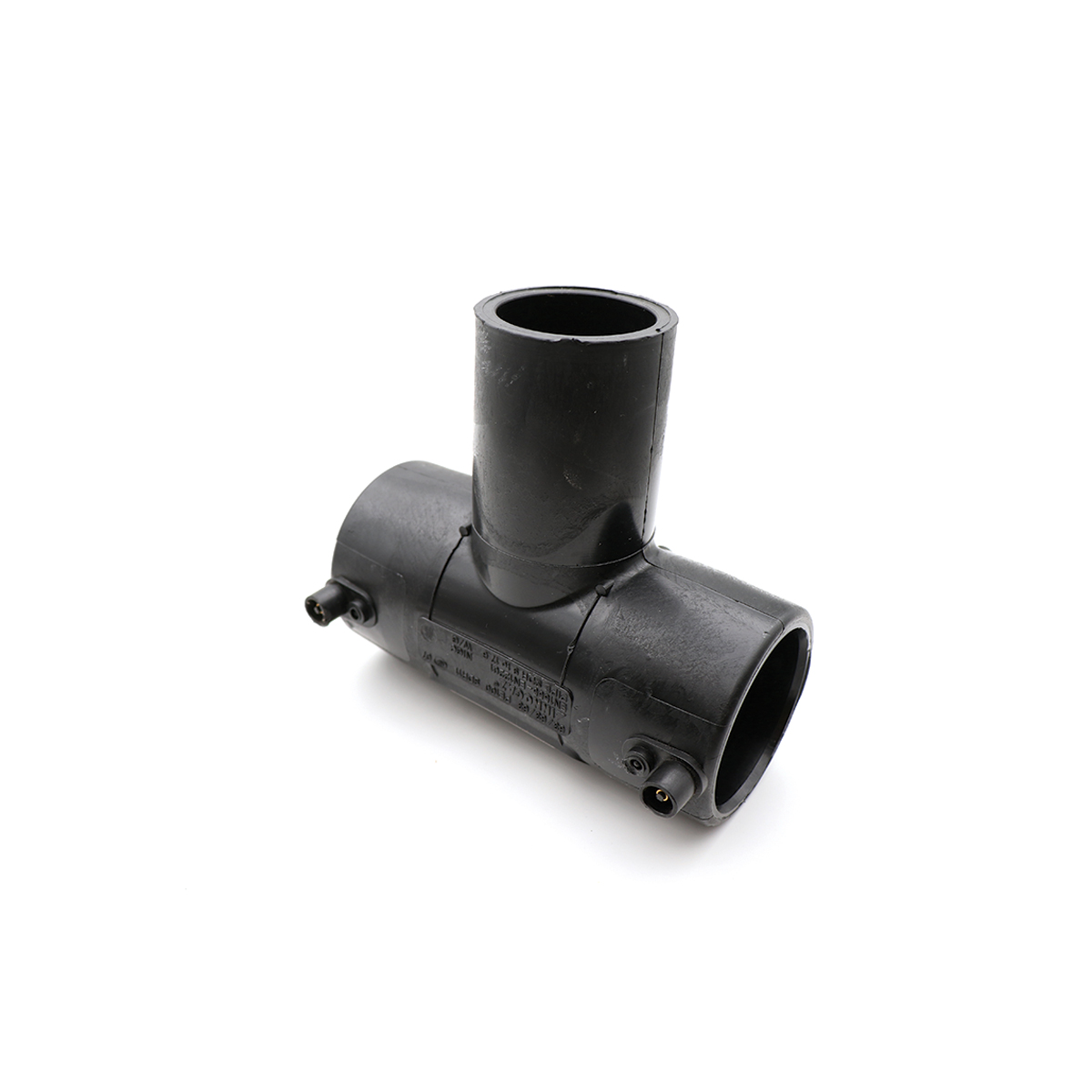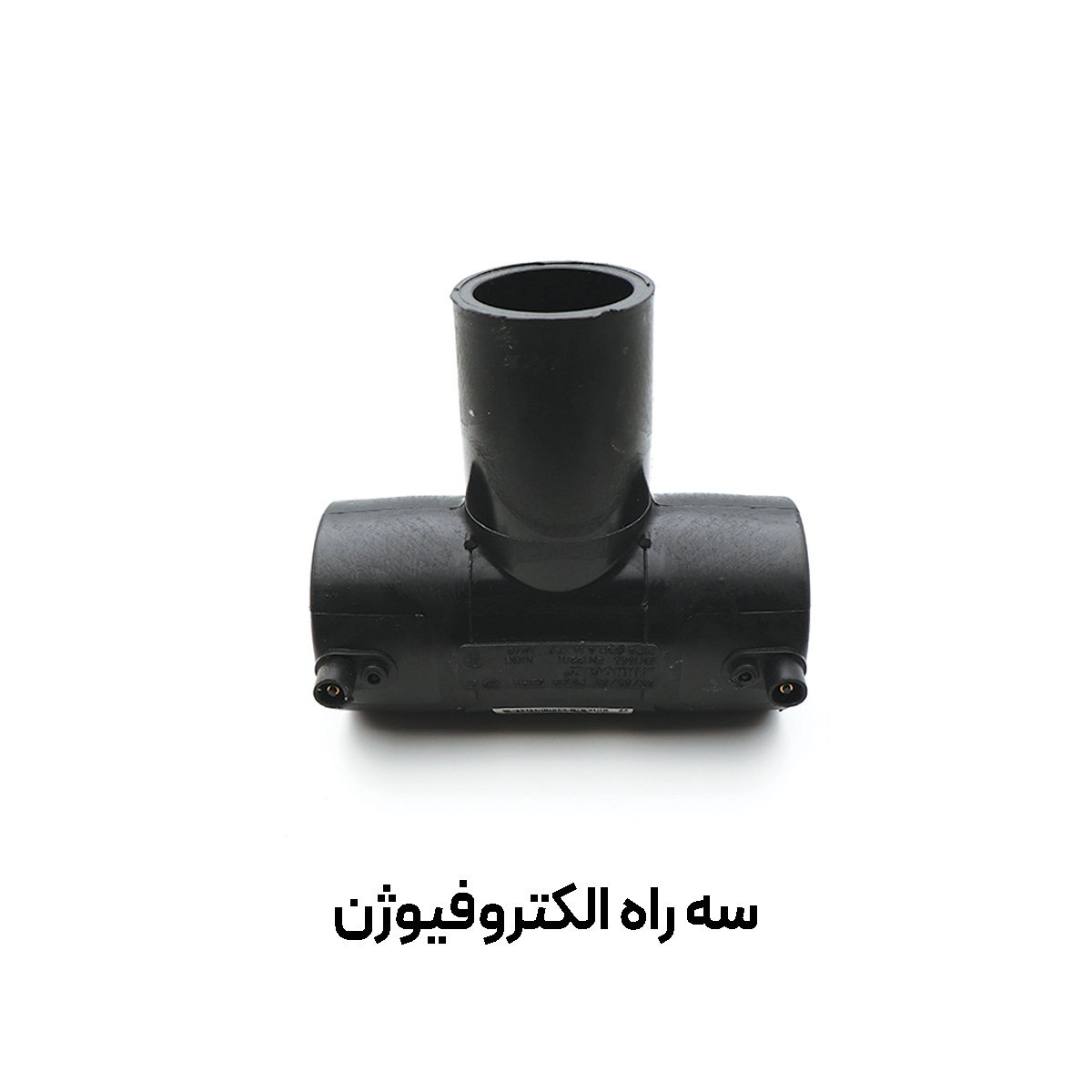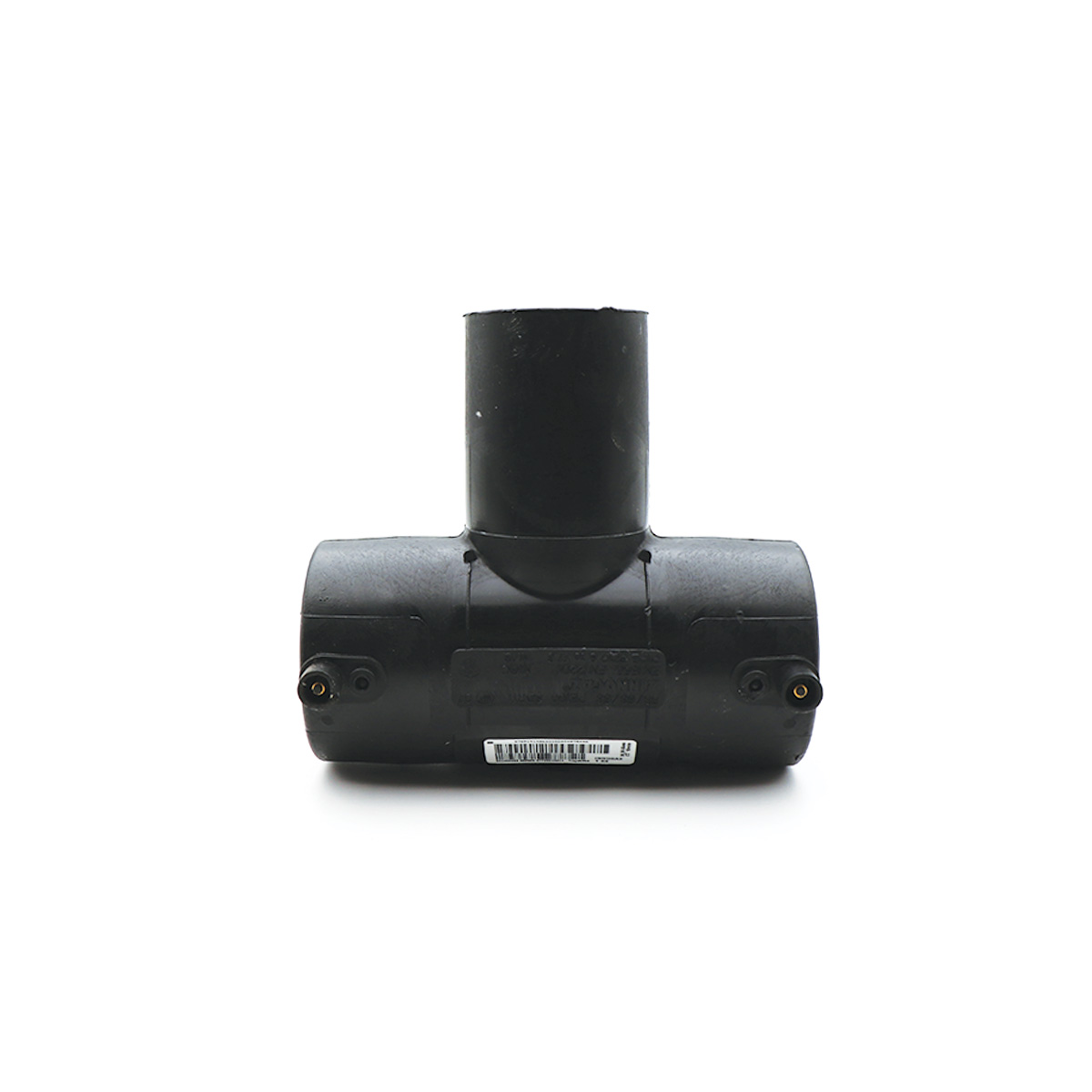Electrofusion tees are among the most vital components of modern fluid-transmission networks; a three-way connection that, by means of resistance coils embedded in its polyethylene (PE100) body, creates—after the passage of a controlled electric current—a weld zone fully uniform and homogeneous with the pipe. The result is a permanent, leak-free joint resistant to impact and thermal fatigue; a feature that makes it ideal for sensitive urban gas distribution lines, hygienic water supply, fire-protection systems, and pressurized irrigation networks.
Structure, Materials, and Dimensional Classification
The fitting body is produced from self-colored PE100 granules; a grade whose high molecular weight, long-term hydrostatic strength (MRS 10 MPa), and melting point around 130 °C ensure pressure resistance up to 16 bar (in SDR11). The tinned-copper winding is positioned in the wall after injection molding and is accompanied by a unique identification code (barcode or QR) for traceability and automatic setting of welding parameters.
| Nominal pipe size (mm) | SDR11 – Maximum working pressure (bar) | Approximate fitting weight (kg) |
|---|---|---|
| 25 | 16 | 0.07 |
| 32 | 16 | 0.10 |
| 63 | 16 | 0.35 |
| 90 | 16 | 0.72 |
| 110 | 16 | 1.10 |
| 160 | 10 | 2.60 |
| 200 | 10 | 3.90 |
| 315 | 10 | 9.70 |
| 400 | 10 | 15.5 |
Standards and Quality Control
Tees are manufactured in accordance with ISO 4437-3 (for gas) and EN 12201-3 (for water), and are validated by 100-hour hydrostatic tests at 80 °C, non-destructive coil control (EC), and slow crack growth testing per ISO 13479. Each piece records a batch number, traceability code, and comprehensive injection and test data in the manufacturer’s database to enable quality tracking throughout the life cycle.
Electrofusion Welding Process in Engineering Terms
- Surface preparation: skive 0.2 to 0.4 mm from the pipe to remove oxide.
- Cleaning: use pure isopropanol and a lint-free wipe.
- Insertion-depth marking: at least equal to the fitting insert length.
- Mechanical locking and alignment: clamping prevents creep during cooling.
- Welder configuration: scan the barcode for automatic voltage (40 V) and fusion time.
- Current application and cooling phase: no movement or loading until the end of the “cooling time.”
- Visual inspection: uniformity of the molten bead and the appearance of witness beads indicate a sound joint.
- Initial pressure test: water/gas test at 1.5× design pressure for at least 30 min.
Key Advantages of the Electrofusion Tee Compared with Alternative Methods
- Easy installation in confined spaces: no need for the rotation clearance of a butt-fusion machine.
- Reduced leak risk in buried lines: homogeneous weld without rubber rings eliminates aging.
- High mechanical stability: resistant to dynamic loads from water hammer and soil settlement.
- Connectivity to smart GIS systems: the traceability code enables linkage to the operations database.
| Technical criterion | Electrofusion (EF) | Butt fusion (BF) |
|---|---|---|
| Common size range | 20–630 mm | 90–2000 mm |
| Required field equipment | EF unit + light clamp | Large facer and hot plate |
| Sensitivity to wind/rain | Low | High |
| Installability in narrow trenches | Excellent | Limited |
| Joint cost at small diameters | Low | Higher |
| Disassembly and recovery | Not possible (permanent) | Not possible (permanent) |
Application Domains and Design Scenarios
- Urban and rural gas distribution networks up to 10 bar; a safe alternative to flanges and threaded fittings at branch points.
- Potable-water transmission and distribution with high hygiene requirements; no heavy metals or vulnerable rubbers.
- Drip and sprinkler irrigation in large farms; resistant to UV and corrosive fertilizers.
- Process units in chemical and petrochemical industries for weak acids and alkalis.
- Firefighting systems and sprinkler rings in commercial complexes; withstand hydraulic shock and allow easy maintenance.
Storage, Handling, and Safety Strategies
Components should be stored on flat, shaded surfaces, away from direct sunlight for more than six months. An ambient temperature between −10 °C and +50 °C and avoiding contact with mineral oils ensure service life. When operating the welding unit, heat-resistant gloves, safety glasses, and adequate ventilation are mandatory.
In closing, Tamambaha is an authorized distributor of these fittings in Iran and, with up-to-date inventory, enables procurement of electrofusion tees for both small and large projects; for neighboring countries in the Middle East, our team can assist with sourcing and logistics upon request. Sorna Pipe products are also available through other authorized representatives.



